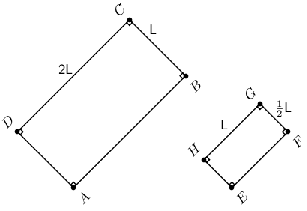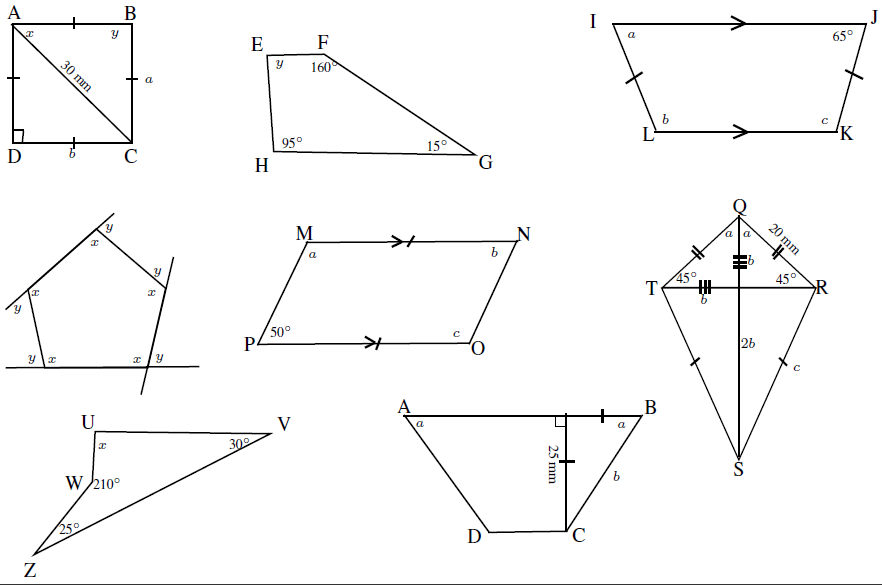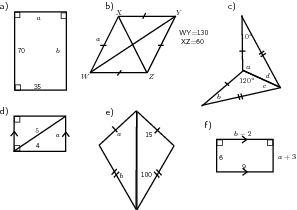| << Chapter < Page | Chapter >> Page > |
We use the symbol to mean is similar to .
Two polygons are similar if:
Show that the following two polygons are similar.

We are required to show that the pair of polygons is similar. We can do this by showing that the ratio of corresponding sides is equal and by showing that corresponding angles are equal.
We are given the angles. So, we can show that corresponding angles are equal.
All angles are given to be 90 and
We first need to see which sides correspond. The rectangles have two equal long sides and two equal short sides. We need to compare the ratio of the long side lengths of the two different rectangles as well as the ratio of the short side lenghts.
Long sides, large rectangle values over small rectangle values:
Short sides, large rectangle values over small rectangle values:
The ratios of the corresponding sides are equal, 2 in this case.
Since corresponding angles are equal and the ratios of the corresponding sides are equal the polygons ABCD and EFGH are similar.
If two pentagons ABCDE and GHJKL are similar, determine the lengths of the sides and angles labelled with letters:

We are given that ABCDE and GHJKL are similar. This means that:
and
We are required to determine the
The corresponding angles are equal, so no calculation is needed. We are given one pair of sides and that correspond. so we know that all sides of are 1,5 times smaller than .
Working in pairs, show that all equilateral triangles are similar.


Analytical geometry, also called co-ordinate geometry and earlier referred to as Cartesian geometry, is the study of geometry using the principles of algebra, and the Cartesian co-ordinate system. It is concerned with defining geometrical shapes in a numerical way, and extracting numerical information from that representation. Some consider that the introduction of analytic geometry was the beginning of modern mathematics.
One of the simplest things that can be done with analytical geometry is to calculate the distance between two points. Distance is a number that describes how far apart two point are. For example, point has co-ordinates and point has co-ordinates . How far apart are points and ? In the figure, this means how long is the dashed line?

Notification Switch
Would you like to follow the 'Contemporary math applications' conversation and receive update notifications?